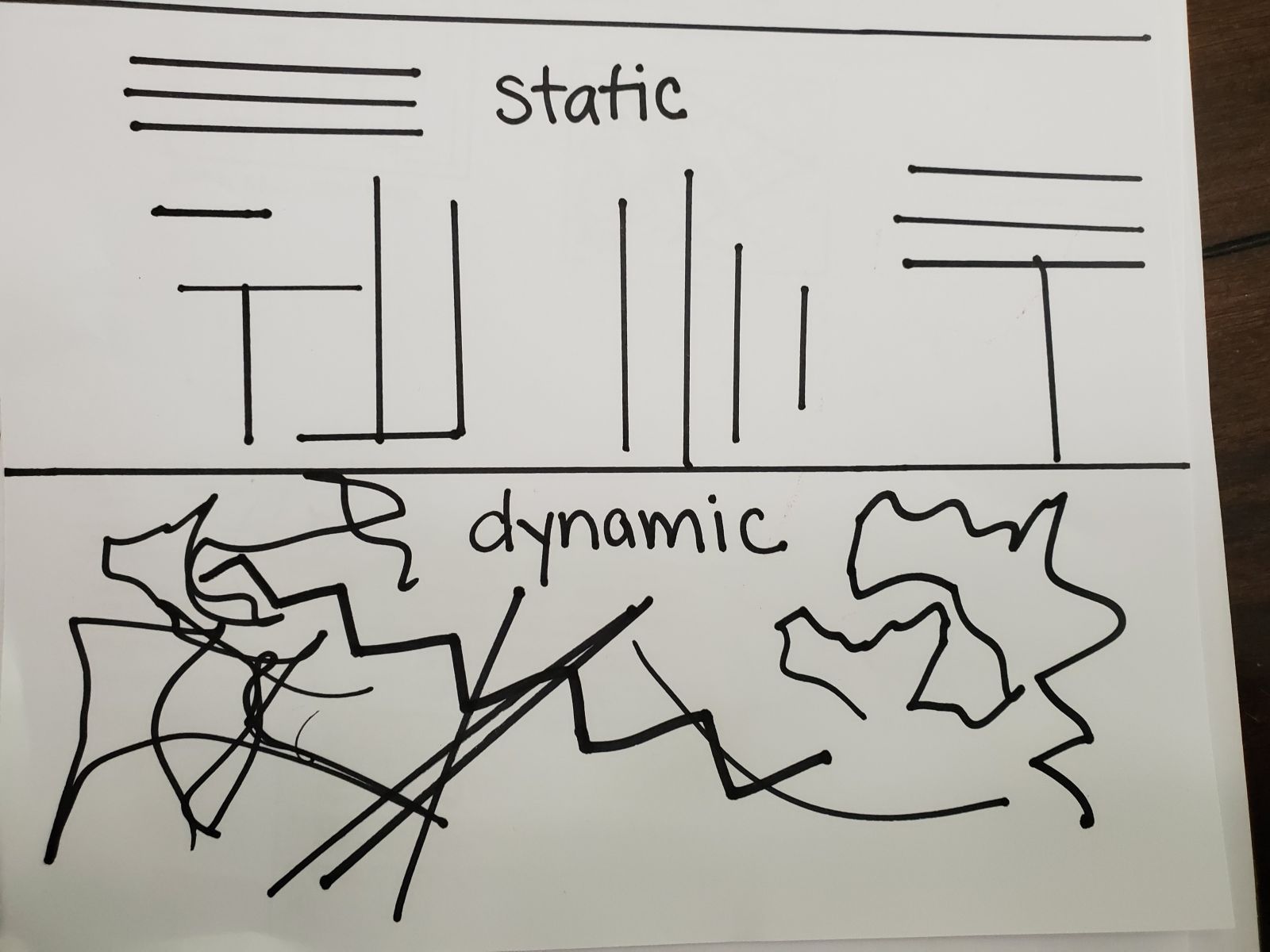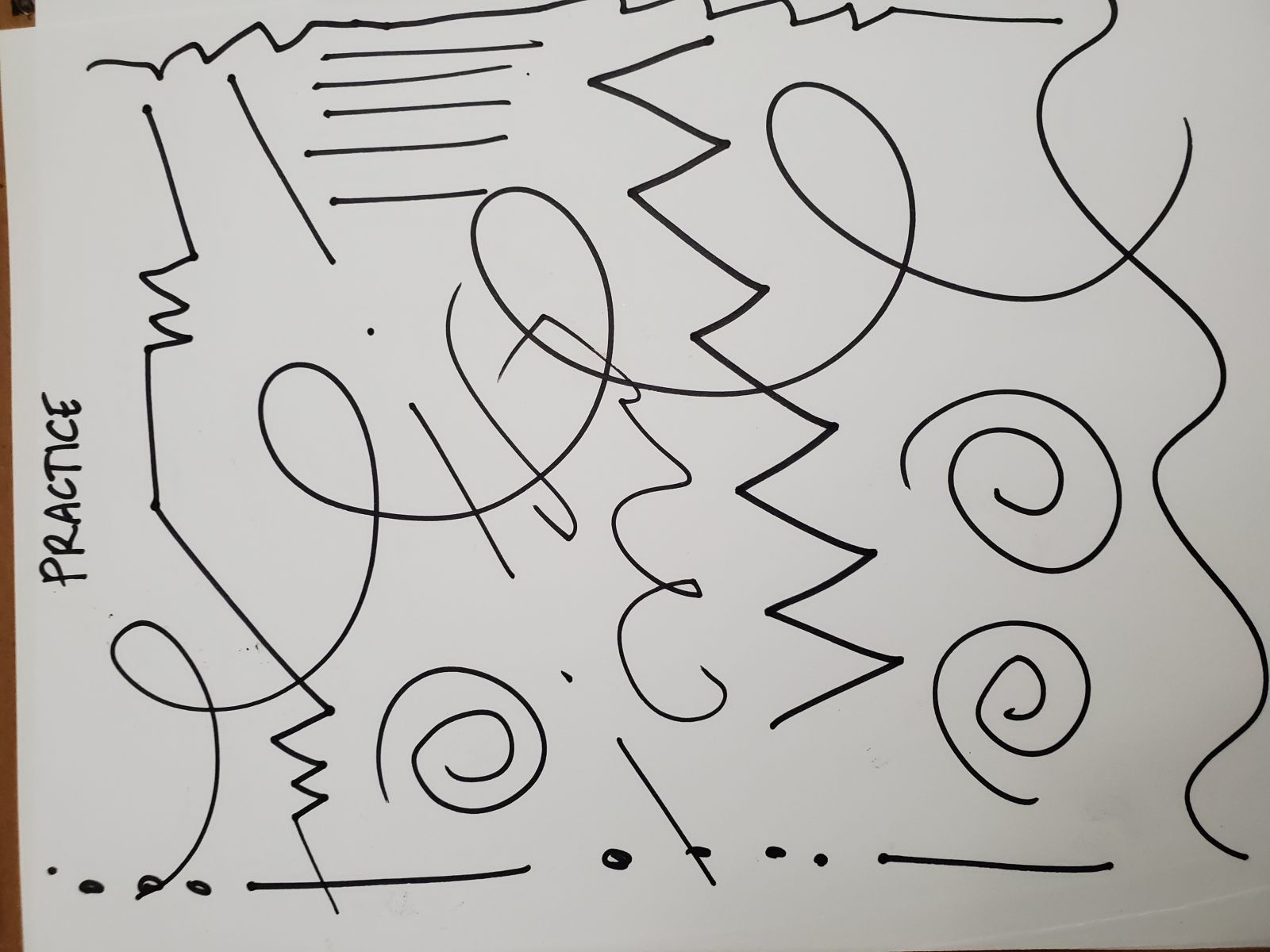Students will experiment with line and create a composition using shapes and lines. Recommended for 1st Graders.
Line: the flat path of a dot through space used by artists to control the viewer’s eye movement; a long narrow mark or stroke made by a pencil, pen, or brush. A mark with greater length than width.
- Straight: vertical, horizontal or diagonal
- Curved: flowing, rounded
- Line quality: the width or appearance of any line, such as thick or thin, smooth or rough, continuous or broken
Shape: a two-dimensional (flat) area enclosed by a line: geometric (symmetrical, except for circles and hearts, straight edged) or organic (with irregular, curved edges). This lesson uses both geometric and organic shapes.
Pattern: the repetition of the elements of visual arts in an organized way. In this lesson it repeats shape & line.
Using a poster with labeled examples, discuss kinds of lines. Keep it simple: straight lines can be diagonal, horizontal, vertical, broken, zig-zag. Curved: wavy, loops, spirals. Have them ‘draw’ the line in the air with their fingers as they repeat the name of the line. Talk about how straight lines ‘feel’ different from curved: i.e. straight is strong, even, solid, like a human-made object; curved feels soft, fluid, like objects in nature. Don’t overload with too much information: at this developmental level stick to the basics.
The students will experiment and create a composition with straight and curved lines. They will see that different lines will affect artwork in different ways.


Students can trace both hands overlapping, concentrating more on radial symmetry.
Once they have filled in the hands they can use a wet-on-dry watercolor technique around the outside of the mehndi drawings. Once the outline color is complete, students can rinse their brushes and add water to the paper, causing the outline to bleed out and wash over the paper to the edges.
Lesson written by Rachelle Roberts. “Insects in Line.” SchoolArts, Apr. 1994, pp. 25–25.
“M-3 Defintions and Qualities of Line.” M3-Definitions and Qualities of Line: Art Appreciation.
21st Century Thinking Skills
Observing, Making Connections, Visualizing, Classifying, Comparing/Contrasting, Finding Evidence, Decision Making.
WA State Learning Standards
(VA:Cr1.2.1) a. Use observation and investigation in preparation for making a work of art.
(VA:Cr2.1.1) a. Explore uses of materials and tools to create works of art or design.
(VA:Cr2.3.1) a. Identify and classify uses of everyday objects through drawings, diagrams, sculptures, or other visual means.
(VA:Cr3.1.1) a. Use art vocabulary to describe choices while creating art.
(VA:Re7.2.1) a. Compare images that represent the same subject. This happens if you use examples to illustrate ideas for drawing the insects.
(VA:Re8.1.1) a. Interpret art by categorizing subject matter and identifying the characteristics of form.
Please note: These lesson plans are intended for non-profit use only. Use of these plans for commercial purposes should give attribution to the Issaquah Schools Foundation and be accompanied by a nominal donation at www.isfdn.org/donate. Thank you.
Fueling Success for Every Student, Every School